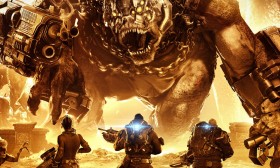Roblox - Role Playing Games: Quest Design: A Review
Introduction
Roblox, a massively popular online gaming platform, has become a hub for immersive role-playing games (RPGs). One of the key elements that make these games engaging is quest design. A well-crafted quest can enhance player retention, storytelling, and overall enjoyment. This article explores the fundamentals of quest design in Roblox RPGs, analyzing what makes quests compelling, common pitfalls, and best practices for developers.
1. The Importance of Quest Design in Roblox RPGs
Quests are the backbone of any RPG, providing structure and purpose. In Roblox, where many games rely on user-generated content, effective quest design can set a game apart from competitors.
Key Functions of Quests:
- Player Engagement – Keeps players invested by offering clear objectives.
- Storytelling – Drives narrative progression.
- Reward System – Encourages progression through in-game incentives.
- World-Building – Helps players explore and interact with the game world.
Without well-designed quests, players may lose interest quickly, leading to lower retention rates.
2. Types of Quests in Roblox RPGs
Different quest types serve different purposes. Here are the most common ones:
A. Main Story Quests
These are the primary missions that advance the game’s central plot. They often include:
- Cutscenes (scripted events)
- NPC interactions (dialogue with characters)
- Boss battles (major challenges)
Example: A Roblox RPG might have a main quest where players must defeat an evil warlord to save the kingdom.
B. Side Quests
Optional missions that provide extra content and rewards. These can include:
- Fetch quests (collecting items)
- Escort missions (protecting an NPC)
- Exploration tasks (finding hidden locations)
Example: A side quest might involve helping a villager retrieve stolen goods from bandits.
C. Repeatable Quests
Designed for grinding (repeating tasks for rewards), these are useful for:
- Leveling up
- Earning currency
- Obtaining rare items
Example: A daily quest where players gather resources for a blacksmith.

D. Event Quests
Time-limited missions tied to special events (e.g., Halloween, Christmas). These often feature:
- Unique rewards (exclusive cosmetics)
- Themed challenges (holiday-themed enemies)
Example: A Halloween event where players hunt ghosts to earn a spooky outfit.
3. What Makes a Good Quest in Roblox?
Not all quests are created equal. The best ones follow these principles:
A. Clear Objectives
Players should instantly understand what they need to do. Avoid vague instructions like:
❌ "Find the lost artifact somewhere in the forest."
✅ "Retrieve the lost artifact from the Bandit Camp in the Northern Forest."
B. Meaningful Rewards
Rewards should feel worthwhile. Examples:
- XP (Experience Points) – Helps with progression.
- Currency – Allows purchasing upgrades.
- Unique Items – Cosmetics or powerful gear.
C. Engaging Storytelling
Even simple fetch quests can be interesting with good dialogue and lore. Example:
- Instead of "Bring me 10 apples," try "The village is starving—please gather food!"
D. Balanced Difficulty
Quests should be challenging but not frustrating.
- Early-game quests should be easy.
- Late-game quests should require strategy.
E. Player Choice (Optional)
Some RPGs allow multiple solutions to a quest, increasing replayability.
- Example: Players can either fight a bandit leader or bribe them.
4. Common Quest Design Mistakes in Roblox RPGs
Many developers fall into these traps:
A. Repetitive Tasks
❌ "Kill 50 wolves, then kill 50 more."
✅ "Investigate why wolves are attacking the village and stop the alpha wolf."
B. Poor Pacing
- Too many fetch quests in a row can bore players.
- Sudden difficulty spikes can frustrate them.
C. Lack of Feedback
Players need clear indicators of progress:
- Quest markers (where to go next)
- Completion notifications (what was earned)
D. Over-Reliance on Grinding
While some grinding is normal, forcing players to repeat the same task endlessly will drive them away.
5. Best Practices for Roblox Quest Design
Here’s how to create high-quality quests:
A. Use a Mix of Quest Types
- Main quests for story progression.
- Side quests for exploration.
- Repeatable quests for grinding (but in moderation).
B. Incorporate Puzzles & Mini-Games
Breaking up combat with puzzles or skill-based challenges keeps gameplay fresh.
C. Test with Real Players
Get feedback to identify boring or confusing quests before release.
D. Update & Expand Quests Over Time
Adding new quests in updates keeps players coming back.
6. Case Study: Successful Roblox RPGs with Great Quest Design
A. "Adopt Me!" (Social RPG with Quests)
- Uses daily tasks to encourage logins.
- Event quests (e.g., Easter egg hunts) keep players engaged.
B. "Blox Fruits" (Action RPG)
- Bounty hunting quests provide long-term goals.
- Boss fights are tied to story progression.
C. "Royale High" (Fantasy RPG)
- School-themed quests (attending classes).
- Seasonal events with unique missions.
Conclusion: The Future of Quest Design in Roblox RPGs
As Roblox continues to evolve, quest design will remain crucial for player retention. Developers should focus on:
✔ Clear, engaging objectives
✔ Rewarding progression systems
✔ Varied and balanced challenges
By mastering these elements, Roblox RPGs can offer deeper, more immersive experiences that keep players coming back for more.















